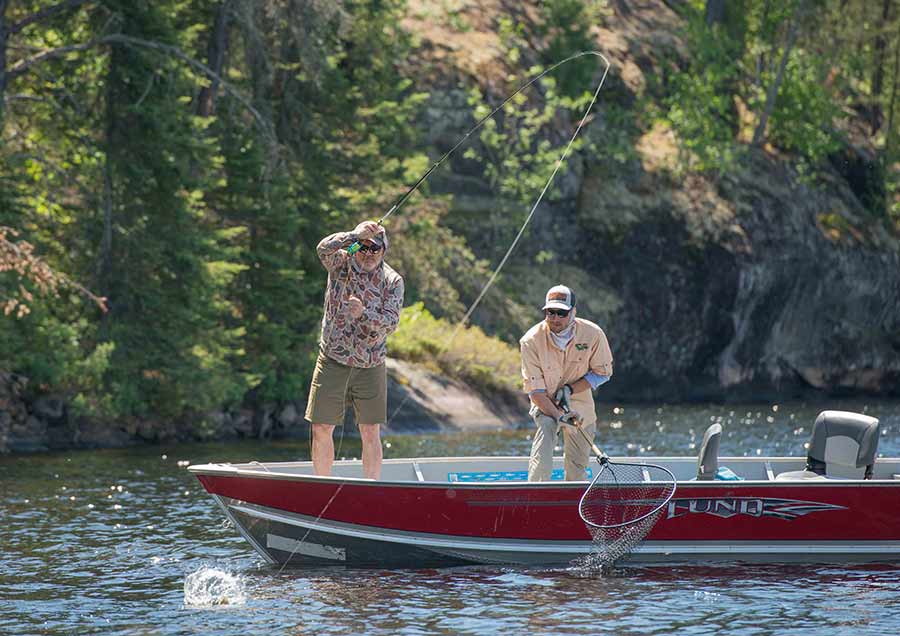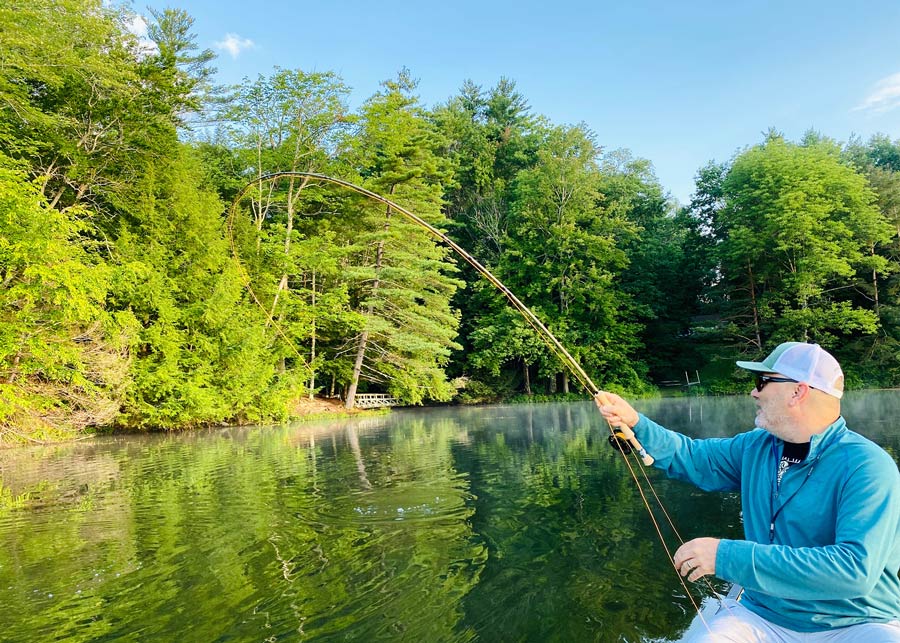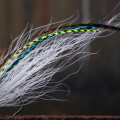Ask MidCurrent: How Can I Stop Losing Largemouth Bass During the Fight?

Largemouths are notorious for being able to throw hooks during the fight, but there are ways to tip the odds in your favor.
Question: I have no problem hooking largemouth bass, but I keep losing them during the fight. What can I do to land more fish?
—Braden from Newberry, SC (via the Ask MidCurrent form)
Answer: Hooking a largemouth bass on the fly is only half the battle. Keeping that bass on the line through jumps, dives, and boat-side thrashes takes a certain amount of skill, preparation, and discipline. Here are a few tips that can can significantly increase your landing rate.
Stay Sharp
The most basic yet frequently overlooked aspect of keeping a bass hooked is ensuring your hook is razor-sharp. Many hooks, even premium ones, aren’t sharp enough straight out of the box and degrade quickly after bouncing off structure or snagging. Sharpening your hook with a hone before you start fishing and throughout the day makes a measurable difference. Every time you hook a rock or a log, take a second to check your point.
Although it may seem counterintuitive, mashing the barb can actually improve your hook-up ratio. On big bass flies, the barb can prevent full hook penetration. A flattened barb allows the hook to drive deeper, setting more securely, and it also reduces the risk of injury to anglers—especially helpful when your thumb is in the fish’s mouth during the release.
Strip It Good
To ensure a solid connection, always respond to a strike with a strip set, driving the hook home with your stripping hand, rather than lifting the rod as you would on a trout. A strip set transfers significantly more energy to the fly than a traditional trout set, especially at longer distances. A strip set also keeps the line tight during the critical moment of hook drive, which helps if the hook has lodged in the tough part of a bass’s mouth.

To minimize slack, keep your rod tip low as you strip in the fly.
Slack Is Your Enemy
It’s crucial to maintain a tight line between your rod tip and the fly, from the moment the fly hits the water until the fish is in the net. One of the simplest ways to do this is to keep your rod tip low and close to the water’s surface during the retrieve. This minimizes the slack in your line, enhances the action of your fly, improves strike detection—especially with the subtle “suction strikes” that big bass often use—and allows you to set the hook faster.
As soon as the fish is on, quickly raise your rod tip and maintain steady upward pressure. This helps keep the bass’s head up, discouraging it from diving into heavy cover, where many battles are lost.

Bass don’t usually make long runs, so you’re better off stripping-in the fish, rather than putting it on the reel. Photo: Sandy Hays
Keep Control
Resist the temptation to put the bass on the reel unless it does so naturally with a strong, clean run—which is pretty uncommon. When you’re fumbling with coils of loose line or cranking frantically to get on the reel, you’re not focused on the fish. Instead, use short, firm strips, and keep your hands working close together to maintain control. As the fish tires, use the power of the butt of the rod, which delivers maximum leverage with minimal effort.
If the bass surges, give line only as a last resort. Largemouths often dive into submerged weeds or structure, and every inch of surrendered line increases the risk of a break-off. Use the strongest tippet you can, and apply firm, deliberate resistance.

It’s important to keep your rod tip high at the very end of the fight because if you ease the tension on the bass, you may lose it.
Don’t Relax at the Boat
Many anglers do everything right, until the fish gets close. Do not lower your rod tip and let off pressure prematurely. As you bring the fish to hand, keep your rod high and flexed. If necessary, kneel to reach the fish, and lift the rod over your head to maintain tension. Using a net adds an extra margin of security when landing big bass.
Largemouth bass are powerful, acrobatic, and often frustratingly adept at throwing flies. But with a sharp hook, a solid strip set, constant line tension, and careful boat-side technique, you’ll surely land more of them.
Got a question for our experts? Click here!











